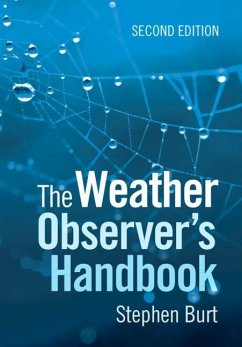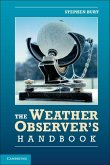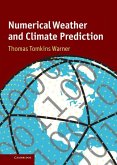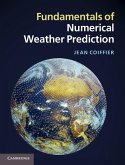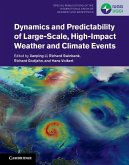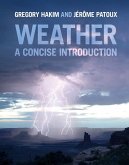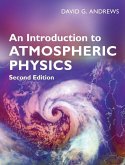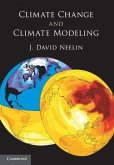Stephen Burt
Weather Observer's Handbook (eBook, ePUB)
39,95 €
39,95 €
inkl. MwSt.
Sofort per Download lieferbar

20 °P sammeln
39,95 €
Als Download kaufen

39,95 €
inkl. MwSt.
Sofort per Download lieferbar

20 °P sammeln
Jetzt verschenken
Alle Infos zum eBook verschenken
39,95 €
inkl. MwSt.
Sofort per Download lieferbar
Alle Infos zum eBook verschenken

20 °P sammeln
Stephen Burt
Weather Observer's Handbook (eBook, ePUB)
- Format: ePub
- Merkliste
- Auf die Merkliste
- Bewerten Bewerten
- Teilen
- Produkt teilen
- Produkterinnerung
- Produkterinnerung

Bitte loggen Sie sich zunächst in Ihr Kundenkonto ein oder registrieren Sie sich bei
bücher.de, um das eBook-Abo tolino select nutzen zu können.
Hier können Sie sich einloggen
Hier können Sie sich einloggen
Sie sind bereits eingeloggt. Klicken Sie auf 2. tolino select Abo, um fortzufahren.

Bitte loggen Sie sich zunächst in Ihr Kundenkonto ein oder registrieren Sie sich bei bücher.de, um das eBook-Abo tolino select nutzen zu können.
- Geräte: eReader
- mit Kopierschutz
- eBook Hilfe
- Größe: 45.48MB
- FamilySharing(5)
Andere Kunden interessierten sich auch für
![Weather Observer's Handbook (eBook, ePUB) Weather Observer's Handbook (eBook, ePUB)]() Stephen BurtWeather Observer's Handbook (eBook, ePUB)41,95 €
Stephen BurtWeather Observer's Handbook (eBook, ePUB)41,95 €![Numerical Weather and Climate Prediction (eBook, ePUB) Numerical Weather and Climate Prediction (eBook, ePUB)]() Thomas Tomkins WarnerNumerical Weather and Climate Prediction (eBook, ePUB)49,95 €
Thomas Tomkins WarnerNumerical Weather and Climate Prediction (eBook, ePUB)49,95 €![Fundamentals of Numerical Weather Prediction (eBook, ePUB) Fundamentals of Numerical Weather Prediction (eBook, ePUB)]() Jean CoiffierFundamentals of Numerical Weather Prediction (eBook, ePUB)45,95 €
Jean CoiffierFundamentals of Numerical Weather Prediction (eBook, ePUB)45,95 €![Dynamics and Predictability of Large-Scale, High-Impact Weather and Climate Events (eBook, ePUB) Dynamics and Predictability of Large-Scale, High-Impact Weather and Climate Events (eBook, ePUB)]() Dynamics and Predictability of Large-Scale, High-Impact Weather and Climate Events (eBook, ePUB)79,95 €
Dynamics and Predictability of Large-Scale, High-Impact Weather and Climate Events (eBook, ePUB)79,95 €![Weather (eBook, ePUB) Weather (eBook, ePUB)]() Gregory J. HakimWeather (eBook, ePUB)43,95 €
Gregory J. HakimWeather (eBook, ePUB)43,95 €![Introduction to Atmospheric Physics (eBook, ePUB) Introduction to Atmospheric Physics (eBook, ePUB)]() David G. AndrewsIntroduction to Atmospheric Physics (eBook, ePUB)31,95 €
David G. AndrewsIntroduction to Atmospheric Physics (eBook, ePUB)31,95 €![Climate Change and Climate Modeling (eBook, ePUB) Climate Change and Climate Modeling (eBook, ePUB)]() J. David NeelinClimate Change and Climate Modeling (eBook, ePUB)35,95 €
J. David NeelinClimate Change and Climate Modeling (eBook, ePUB)35,95 €-
-
-
Produktdetails
- Verlag: Cambridge University Press
- Erscheinungstermin: 30. April 2024
- Englisch
- ISBN-13: 9781009260565
- Artikelnr.: 72476567
Dieser Download kann aus rechtlichen Gründen nur mit Rechnungsadresse in A, B, BG, CY, CZ, D, DK, EW, E, FIN, F, GR, HR, H, IRL, I, LT, L, LR, M, NL, PL, P, R, S, SLO, SK ausgeliefert werden.
- Herstellerkennzeichnung Die Herstellerinformationen sind derzeit nicht verfügbar.
Dr Stephen Burt commenced his professional career in meteorology within the UK Met Office in 1977, followed by a series of private-sector marketing roles within the computer industry before returning to academia, eventually retiring from the Department of Meteorology at the University of Reading in 2018 (where he remains a Visiting Fellow). His meteorological research interests span instruments, observation techniques and methods, climatological data rescue, case studies of notable weather events, and long weather records and their sites; in all, he has authored or joint-authored some fifty peer-reviewed journal papers to date, and four other books. Stephen is a Fellow of the UK's Royal Meteorological Society and a member of both the American Meteorological Society and the Irish Meteorological Society. He is also an accomplished photographer with several hundred published photographs to his name.
Part I. The Basics: 1. Why measure the weather?
2. Choosing a weather station
3. Buying a weather station
Part II. Measuring the Weather: 4. Site and exposure - the basics
5. Measuring the temperature of the air
6. Measuring precipitation
7. Measuring atmospheric pressure
8. Measuring humidity
9. Measuring wind speed and direction
10. Measuring grass and earth temperatures
11. Measuring sunshine and solar radiation
12. Observing hours and time standards
13. Aws data flows, display and storage
14. Non-instrumental weather observing
15. Calibration
16. Metadata - what is it, and why is it important?
Part III. Making the Most of Your Observations: 17. Collecting and storing data
18. Making the data avalanche work for you
19. Sharing your observations
20. Summary and getting started
Appendix 1: Metrology and meteorology: an instrument theory primer
Appendix 2: Recommended products
Appendix 3: Useful sources
Appendix 4: Mercury-based legacy thermometers and barometers
Appendix 5: Useful functions
Appendix 6: Unit conversions
References
Further reading
Index.
2. Choosing a weather station
3. Buying a weather station
Part II. Measuring the Weather: 4. Site and exposure - the basics
5. Measuring the temperature of the air
6. Measuring precipitation
7. Measuring atmospheric pressure
8. Measuring humidity
9. Measuring wind speed and direction
10. Measuring grass and earth temperatures
11. Measuring sunshine and solar radiation
12. Observing hours and time standards
13. Aws data flows, display and storage
14. Non-instrumental weather observing
15. Calibration
16. Metadata - what is it, and why is it important?
Part III. Making the Most of Your Observations: 17. Collecting and storing data
18. Making the data avalanche work for you
19. Sharing your observations
20. Summary and getting started
Appendix 1: Metrology and meteorology: an instrument theory primer
Appendix 2: Recommended products
Appendix 3: Useful sources
Appendix 4: Mercury-based legacy thermometers and barometers
Appendix 5: Useful functions
Appendix 6: Unit conversions
References
Further reading
Index.
Part I. The Basics: 1. Why measure the weather?
2. Choosing a weather station
3. Buying a weather station
Part II. Measuring the Weather: 4. Site and exposure - the basics
5. Measuring the temperature of the air
6. Measuring precipitation
7. Measuring atmospheric pressure
8. Measuring humidity
9. Measuring wind speed and direction
10. Measuring grass and earth temperatures
11. Measuring sunshine and solar radiation
12. Observing hours and time standards
13. Aws data flows, display and storage
14. Non-instrumental weather observing
15. Calibration
16. Metadata - what is it, and why is it important?
Part III. Making the Most of Your Observations: 17. Collecting and storing data
18. Making the data avalanche work for you
19. Sharing your observations
20. Summary and getting started
Appendix 1: Metrology and meteorology: an instrument theory primer
Appendix 2: Recommended products
Appendix 3: Useful sources
Appendix 4: Mercury-based legacy thermometers and barometers
Appendix 5: Useful functions
Appendix 6: Unit conversions
References
Further reading
Index.
2. Choosing a weather station
3. Buying a weather station
Part II. Measuring the Weather: 4. Site and exposure - the basics
5. Measuring the temperature of the air
6. Measuring precipitation
7. Measuring atmospheric pressure
8. Measuring humidity
9. Measuring wind speed and direction
10. Measuring grass and earth temperatures
11. Measuring sunshine and solar radiation
12. Observing hours and time standards
13. Aws data flows, display and storage
14. Non-instrumental weather observing
15. Calibration
16. Metadata - what is it, and why is it important?
Part III. Making the Most of Your Observations: 17. Collecting and storing data
18. Making the data avalanche work for you
19. Sharing your observations
20. Summary and getting started
Appendix 1: Metrology and meteorology: an instrument theory primer
Appendix 2: Recommended products
Appendix 3: Useful sources
Appendix 4: Mercury-based legacy thermometers and barometers
Appendix 5: Useful functions
Appendix 6: Unit conversions
References
Further reading
Index.
